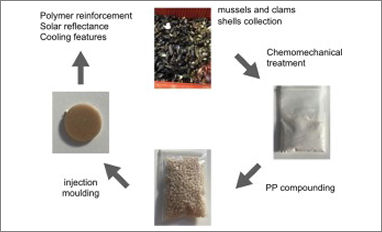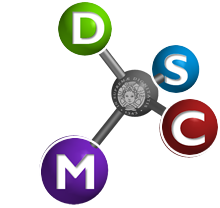 A new sustainable and accessible solution to overcome marine landfilling employing seashell waste as a bio-filler in polymer composites. Here is the abstract of the last publication of a group of Italian researchers in collaboration with the Consorzio Molluschicoltori Veneti: Jacopo Cangiotti, Marco Scatto, Esteban Araya-Hermosilla, Cosimo Micheletti, Diego Crivellari, Alice Balloni, Andrea Pucci, Alvise Benedetti.
A new sustainable and accessible solution to overcome marine landfilling employing seashell waste as a bio-filler in polymer composites. Here is the abstract of the last publication of a group of Italian researchers in collaboration with the Consorzio Molluschicoltori Veneti: Jacopo Cangiotti, Marco Scatto, Esteban Araya-Hermosilla, Cosimo Micheletti, Diego Crivellari, Alice Balloni, Andrea Pucci, Alvise Benedetti.
Abstract:
Waste mussel (Mytilus galloprovencis) and clam (Ruditapes philippinarum) shells can be used as a bio-filler in polymeric composites. In this work, powdered shell wastes were incorporated into a polypropylene (PP) matrix. The powdered shell wastes were characterized by means of X-ray diffraction (XRD) and scanning electron microscopy equipped with an energy dispersive spectrometer (SEM-EDS). DSC analysis of the PP composites indicates that both fillers did not act as nucleating agents but partially interfere with the formation of the crystalline phase of the polymer matrix. Moreover, by increasing the filler content, the elastic modulus of PP enhanced from ∼450 to ∼510 MPa. Finally, it was evidenced that mussels and clams shell powders enhanced the solar reflectance features of PP.
The work is available at the following link: https://www.sciencedirect.com/science/article/pii/S001430572100611X


